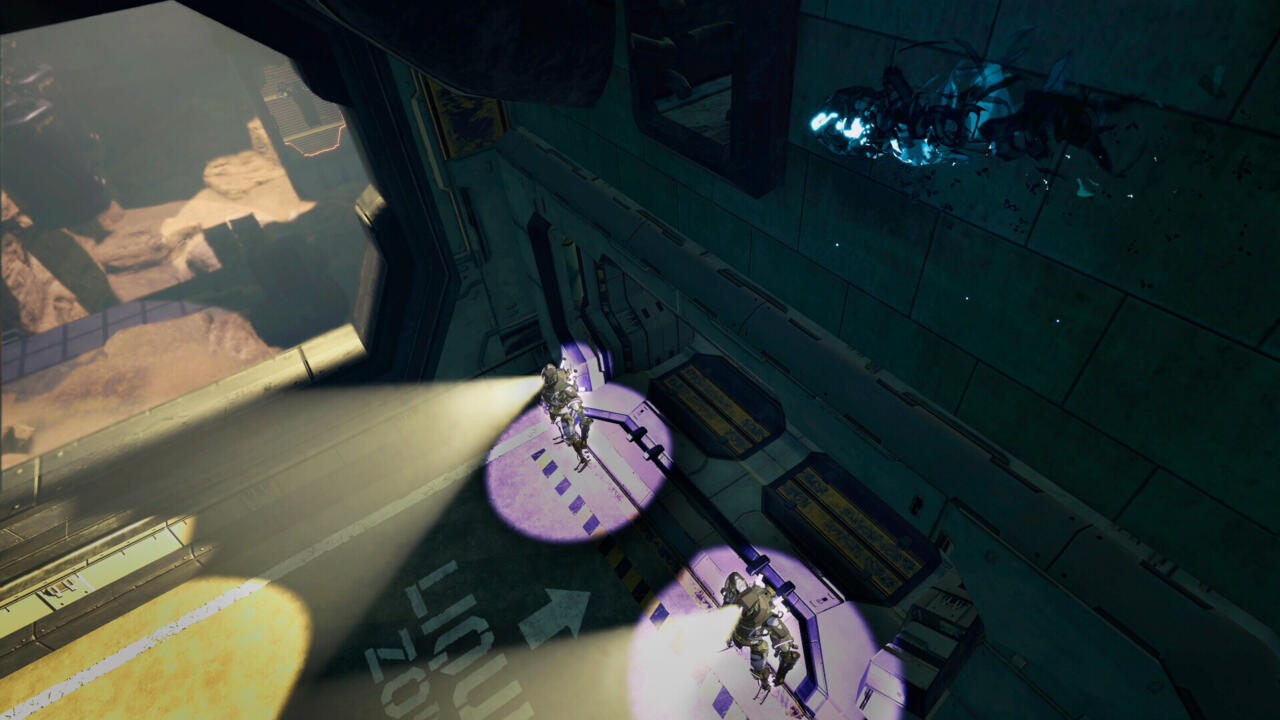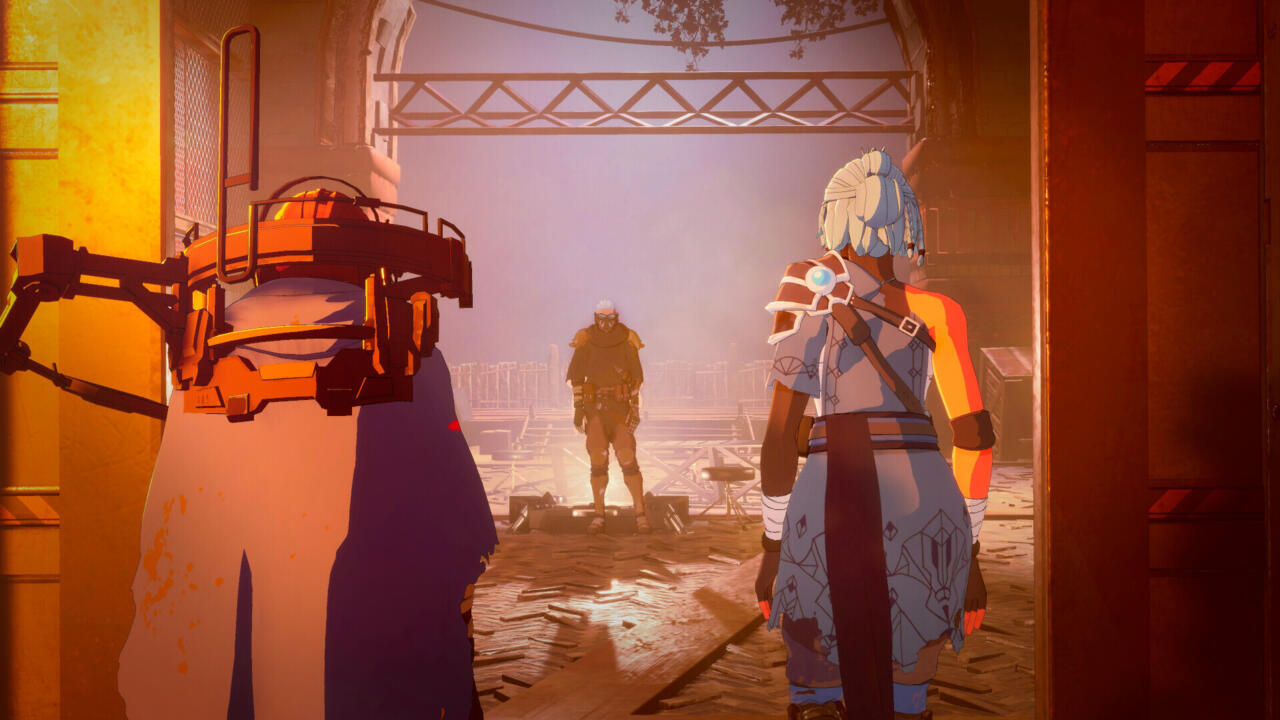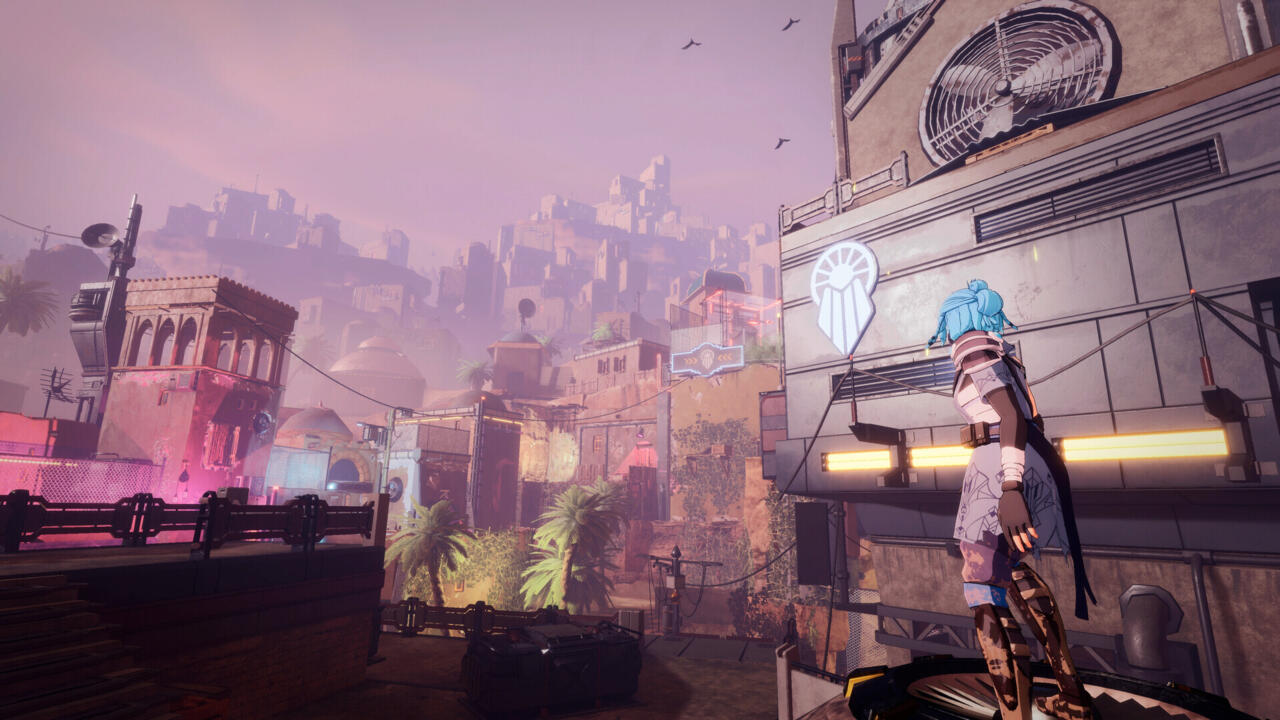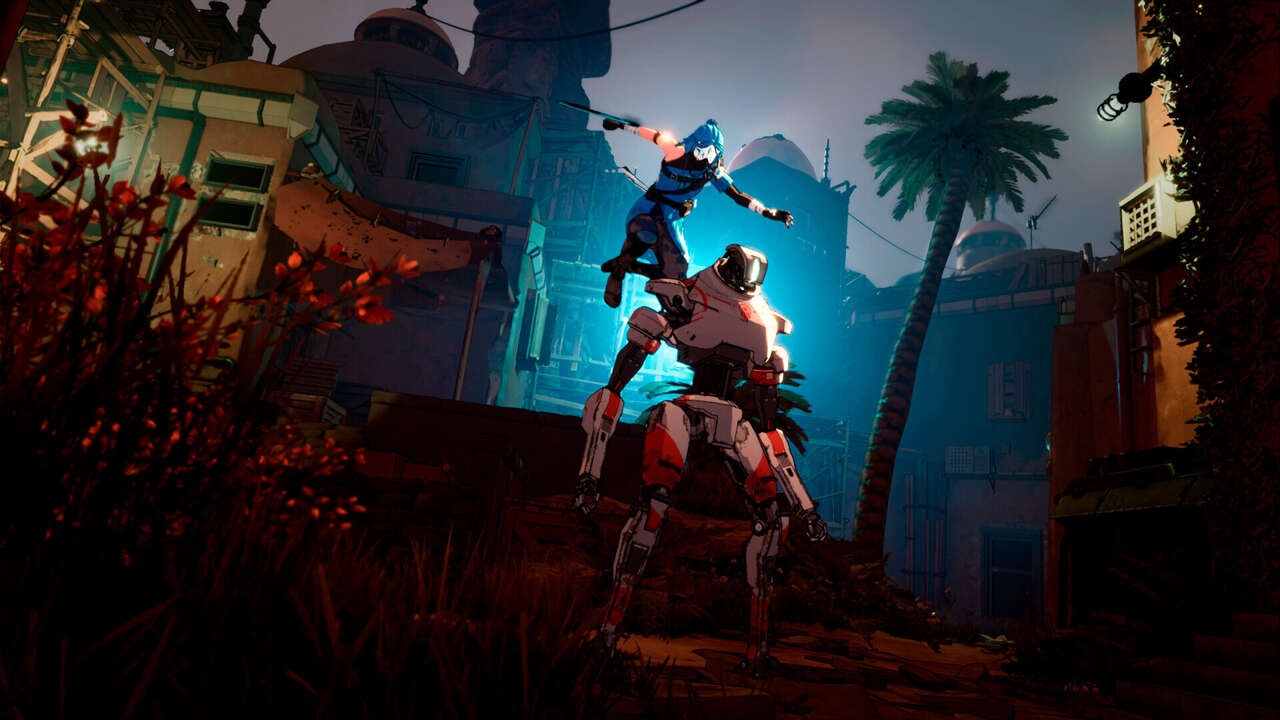In what feels like a spiritual successor to 2016’s Aragami, Ereban: Shadow Legacy transforms you into a deadly shadow that can become one with the darkness–the ultimate stealth operative. The game doesn’t quite deliver the necessary challenge to make for a successful stealth game, however, as the first trick you learn will get you through the entire game without a hitch. It does far better on the platforming front, and though its cast of characters could have used some fleshing out, the futuristic sci-fi world they inhabit is cultivated with colorful sights and intriguing snippets of lore.
As its name implies, Shadow Legacy’s main gimmick is its use of shadows. You play as Ayana, the last of the titular Ereban, a people who possess the innate ability to become one with and manipulate shadows. Using her shadow merge ability, Ayana can sink into shadows to creep past enemies, slink up walls, and dispose of bodies, encouraging you to stick to the shadows where your toolbelt is at its strongest. Alongside these shadow abilities, Ayana has an assortment of advanced gadgets–some are always useful like a recon pulse that marks enemies and items through walls, while others are more situational like mines that stun targets–which work regardless of the lighting situation.
I initially thought that this would present plenty of opportunities and strategies to sneak past enemies, most of whom will take out Ayana in a single hit. There’s a healthy variety of foes who want to take her down–standard enemies don’t pose much threat beyond the flashlight they carry to take away your darkness, but the more adept snipers can spot you from afar and the stealthy droids who can go invisible can ruin your day if you’re not taking time to look for the telltale shimmer. And then there are the human enemies who present a moral quandary rather than a gameplay one–while the mechanical droid-like enemies that dominate each level can be killed with impunity, murdering the living and breathing human workers will negatively impact Ayana’s morality and others’ perception of her (which I’ll touch on a bit more later).
Unfortunately, Ayana’s natural ability to merge into the shadows and traverse unseen is very powerful–so powerful, in fact, that you don’t really need to rely on anything else. The enemies aren’t very smart either, so they’re easy to avoid even if you solely rely on shadow merge. This means that it’s actually quite easy to go through the entire game without being seen or resorting to lethally cutting down humans, making for a stealth game that doesn’t quite give you enough opposition to challenge you to think critically when it comes to circumnavigating a threat. There aren’t any difficulty settings to make the enemies smarter or more plentiful either–though you can adjust how many environmental guides show up in each level (purple lamps or purple paint that point you in the general direction you have to go, for example).

Shadow Legacy teases you with a tantalizing view of what it could be in its third chapter, briefly breaking free from its otherwise linear stealth levels to give you a playground in which you can tackle an assortment of missions in any order within an open area. Within this open space, you have more of a choice in how you approach each assignment instead of being funneled through a more linear challenge. Mistakes have a more drastic impact because you’re not moving from one area to the next–it’s all one big connected location, where your actions can snowball into unintended effects. Ayana’s assortment of abilities and gadgets also have way more utility in this level. The binoculars used for scouting and mapping enemy movements are way more valuable in a giant open space than in an enclosed laboratory or city street, for instance. The game never opts for this format again, however, and in doing so it leaves me wishing for what might have been.
To the game’s credit, the back half of Shadow Legacy has some creative set pieces from a platforming standpoint, with one section in particular that I adored for how well it challenged and encouraged me to utilize all I had learned up to that point in one fast-paced gauntlet. Shadow merge can be used to eject out of shadows to make otherwise impossible jumps or interact with the environment to solve simple riddles–skills that apply to challenges that steadily get more complex as the game goes on. Even if Shadow Legacy falls short of being a great stealth game, it’s a good platformer. The environmental elements create an assortment of shadows–some oddly shaped, others that move, and still more that can be altered–and figuring out how to reach an out-of-the-way platform is sometimes a puzzle within itself, made trickier and more rewarding to solve given the stamina meter tied to Ayana’s shadow merge. Not only do you have to figure out which shadows to move or follow or jump between, but you also usually have to do it in a timely manner.

In service of these platforming challenges, Shadow Legacy features a colorful diversity of locales, ranging from an outpost in the desert to an autonomous factory. My favorite is an urban street that hints at the human life that once populated it, now devoid of any movement save for the autonomous drones that patrol the streets and promise that this is for the best. Sporadic graffiti and text logs hint at the growing loss of autonomy among the human citizens leading up to the corporate takeover that promised everyone a better life. It’s such an eerie level, framed against the setting sun that’s causing the street to slowly be encroached by shadow. It feels fitting that Ayana uses those same shadows to sneak her way past the guards searching for her, paralleling how the oppressive regime’s efforts can’t stop the resistance–they squeezed so much life out of this one city block that now there’s no living soul to report Ayana to the authorities, just dumb, easily-fooled machines.
Guiding Ayana through these challenges is a story that never quite gets room to breathe. Initially trapped by an AI-controlled entity hellbent on using her powers for some unknown purpose, Ayana finds herself quickly working with the resistance seeking to free themselves from corporate tyranny. Ayana is hesitant to work with them, having heard they’re nothing more than terrorists but agrees to use her unique skillset to help on the condition that the group gives her everything they know about the Ereban people. There are some interesting, albeit familiar, narrative themes here, but Shadow Legacy rushes through them–Ayana buys into the resistance’s cause remarkably quickly, for example, despite being given no catalyst to do so.

In the game’s third chapter, Ayana is warned to spare humans so as to help alleviate the accusations that the members of the resistance are terrorists. This is the game’s morality system, shifting the coloring of Ayana’s design toward shining white or sinister purple depending on how bloodthirsty you play her. As far as I can tell, the ramifications of this only impact one small moment in the final level of the game–it’s not much of a narrative payoff.
At certain points in the story, Ayana can upgrade her shadow powers and you have a choice of whether to unlock new branches on one of two skill trees. One branch leans toward non-lethal abilities, like cushioning your footsteps, while the other opts for skills that make you a better killer, like making it easier to hide bodies so your deeds aren’t discovered. This creates some fun replayability as it’s impossible to fully unlock both branches in a single playthrough, but, again, shadow merge is just too strong. The new powers are cool, but I never had to use them, as shadow merge makes it fairly easy to sneak through a level without being spotted. Granted, I opted for a nonlethal run. It’s possible that if I had aimed for a playthrough where I killed everything that moved, I’d have needed to rely on more of the powers that hide bodies or kill multiple enemies at a time in order to not alert guards that something was wrong.
Ereban: Shadow Legacy sits in a weird place for me. As a stealth game, it rarely challenged me, reducing protagonist Ayana into a one-trick pony that could sneak past any target with the same shadow merge skill every time. But as a platformer, Shadow Legacy incorporates some entertaining puzzles that grow increasingly complex and rewarding to overcome. I never quite managed to connect to Ayana’s journey against the autonomous overlords planning to doom an entire civilization, but I had a lot of fun slinking up walls and exploding out of the darkness, striving to time my jumps with the movement of a windmill and the rotating shadow it was casting. Those nail-biting moments are the ones that stuck with me, not the dozenth time I slunk past an unsuspecting droid.
